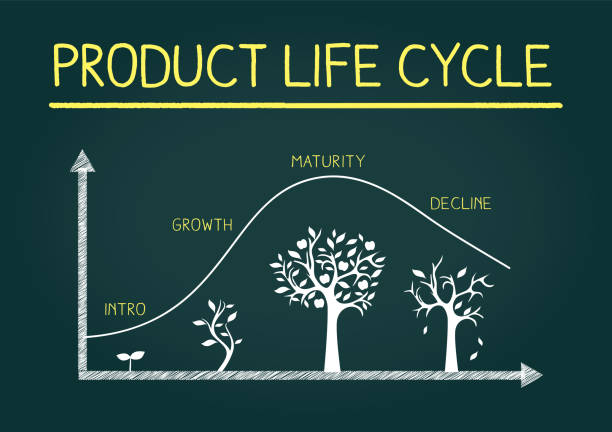What is a Product Lifecycle?
A Product Lifecycle refers to the series of stages a product goes through from conception and design to withdrawal or discontinuation.

Detailed Explanation
Product Lifecycle encompasses four main phases:
- Introduction: This phase starts with the product’s launch in the market after development and testing stages. Sales volumes are typically low during this stage because the product is new and not yet widely known or accepted. It’s a phase of investment, with high costs related to promotion and distribution to make potential customers aware of the product. Pricing strategies can vary: some companies may employ a penetration pricing strategy to gain market share rapidly, while others might use price skimming to recover the costs of development.
- Growth: If the product is successful, it will move into the growth stage. Here, sales volumes increase rapidly as more customers become aware of the product and start buying it. Profits also start to increase during this stage. The growth phase is also when competition tends to increase, as other companies notice the product’s success and try to gain a share of the market. This competition prompts a higher spend on advertising to maintain customer interest and fend off competitors.
- Maturity: The maturity stage is when sales volume peaks. At this point, the product is well-established in the market, but the rate of growth slows down, primarily due to market saturation or increased competition. During this phase, companies often look for ways to rejuvenate their products by adding new features or targeting new market segments. Cost management becomes crucial in this stage to maintain profitability.
- Decline: Eventually, most products enter the decline stage, where sales start to fall. This could be due to various factors such as changing customer preferences, technological advancements, or increased competition. During the decline stage, companies have to decide whether to discontinue the product, sell it, or try to prolong its life through tactics such as targeting new markets or repositioning the product. It’s also a time to manage inventories carefully to avoid excessive obsolete stock.
Not all products will go through each stage sequentially or spend the same amount of time in each stage. Some may skip stages, and others might stay in one stage for a long time, Product lifecycle management is about understanding these dynamics and making strategic decisions accordingly.
In SaaS context, the product lifecycle can have certain unique aspects. For example, the product can evolve continuously based on user feedback or analytics, and the ‘decline’ stage can be a pivot or a significant overhaul rather than a discontinuation.
Why It Matters?
A Product Lifecycle is crucial in SaaS as it helps businesses make strategic decisions about the product at every stage. Understanding these stages is crucial for a SaaS CEO or CMO as it guides investment, marketing strategies, and product development efforts.
Potential Misunderstandings
A common misunderstanding is that the Product Lifecycle is linear and unchangeable. In reality, especially in SaaS, products can pivot and enter a new growth stage.
Frequently Asked Questions
1. What happens in the maturity stage of the Product Lifecycle?
During the maturity stage, the product reaches peak market penetration and competition intensifies. This is often the most profitable stage.
2. Can a product skip the decline stage?
Yes, particularly in the SaaS industry, companies can often revamp their product or pivot to enter a new growth stage.
